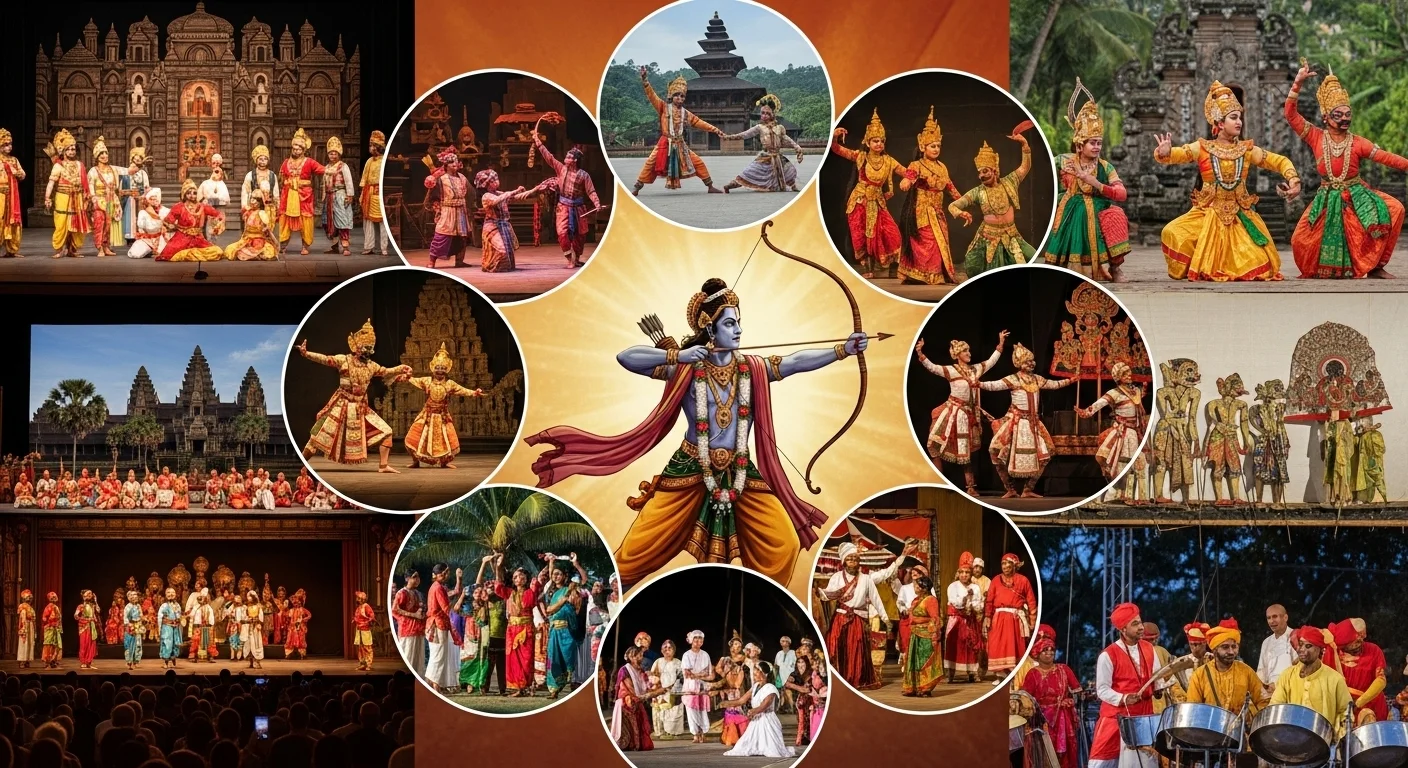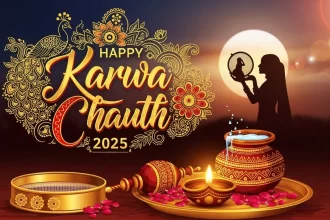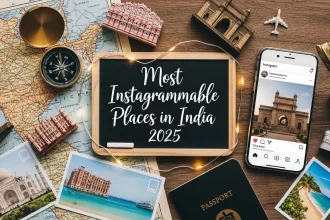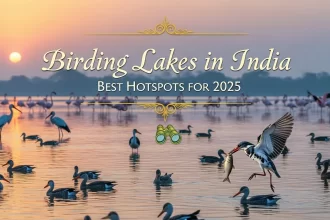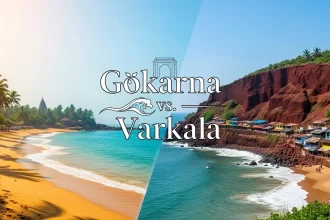The story of the Ramayana is one of the world’s most enduring epic poems, a timeless narrative of duty, love, and the ultimate triumph of good over evil. In India, this epic is brought to life each year through Ramlila, a dramatic folk re-enactment that captivates millions. However, the performance is not confined to the land of its origin. Over centuries, communities have carried this profound tradition to distant shores, establishing a vibrant tradition of Ramlila outside India. This art form holds deep cultural significance of Ramlila, serving as a living link to a shared heritage. This article will take you on a journey to discover ten famous countries where you can witness these truly epic Ramlila celebrations abroad.
A Global Phenomenon: Why Ramlila is Celebrated Beyond India
The widespread performance of Ramlila across the globe is a testament to the enduring power of culture and faith. For centuries, the Indian diaspora has carried the tales of Lord Rama and his journey to their new homes. These communities, often separated from their native land, found in these plays a way to preserve their identity, language, and spiritual values.
The Ramayana’s universality has also contributed to its spread. Its themes resonate with people from all walks of life, leading to beautiful and unique Ramayana adaptations that are infused with local traditions and styles. These international Ramlila festivals are more than just performances; they are vibrant cultural exchanges. This global recognition culminated in Ramlila being declared a UNESCO Intangible Cultural Heritage of Humanity in 2008, cementing its status as a universal treasure.
The 10 Famous Countries to Witness Ramlila
Here is a curated list of ten countries where the epic performance of Ramlila has become a cherished annual event.
1. Nepal
As the birthplace of Goddess Sita, Nepal shares an intimate and historical bond with the Ramayana. The celebrations here are not just a performance but a deeply spiritual and religious event that draws on centuries of shared tradition. The performance is steeped in reverence for the characters and the story’s moral teachings.
- Unique Aspect: The Ramlila in Nepal is often held in the form of a grand play or Ramleela, performed in temples and open grounds across the country, with special emphasis on the events that took place in Janakpur, Sita’s birthplace.
2. Trinidad and Tobago
The story of Ramlila in Trinidad and Tobago is one of resilience and cultural preservation. It was brought to the island nation by indentured laborers from India in the 19th century. Despite the geographical distance and initial struggles, the community’s commitment ensured the tradition flourished.
- Unique Aspect: The performances often incorporate local creole dialect and folk music, blending Indian and Caribbean influences. The grand finale of the Dussehra festival with the burning of Ravana’s effigy is a spectacular sight, attracting people of all backgrounds.
3. Fiji
Similar to Trinidad and Tobago, Ramlila in Fiji was established by Indian laborers. It became a powerful means for the Indo-Fijian community to maintain a connection to their heritage and pass it on to future generations.
- Unique Aspect: The performances here are often lengthy, spanning several nights, and are known for their intricate costumes and traditional music. They are a community-led affair, with villages coming together to stage the epic.
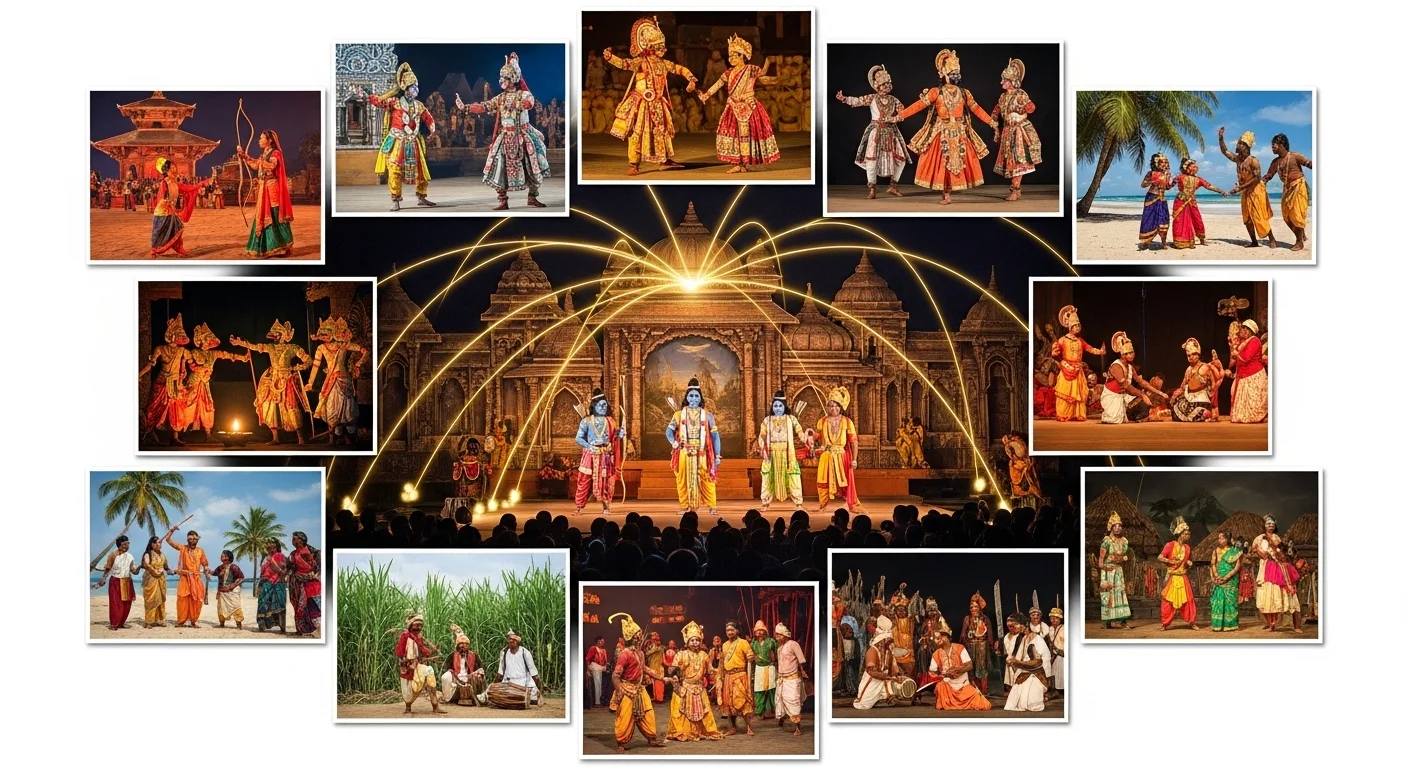
4. Mauritius
The island nation of Mauritius is home to a significant population of Indian origin, and the Ramlila in Mauritius is a highlight of their cultural calendar. The celebrations are a vibrant display of devotion and artistry.
- Unique Aspect: The performances are often organized by local temples and cultural centers, accompanied by devotional songs and bhajans that add a spiritual dimension to the narrative.
5. United Kingdom
As a major hub for the Indian diaspora, the Ramlila in UK has evolved into a highly professional and theatrical event. Celebrated in major cities, these productions often take place in grand theaters and auditoriums.
- Unique Aspect: Performances in the UK are known for their modern interpretations, high production values, and use of technology to create stunning visual effects. They are designed to appeal not only to the Indian community but to a wider, multicultural audience.
6. United States of America
The Ramlila celebrations in the USA are a testament to the thriving Indian-American community. Organized by various cultural and religious organizations, these events serve as an important platform for preserving traditions.
- Unique Aspect: The performances are often adapted to suit a new-age audience, with shorter plays, multimedia presentations, and interactive elements. These events are crucial for educating the youth about their Naga heritage and the story of the Ramayana.
7. Thailand
Thailand’s connection to the Ramayana is historical, not through migration. The Thai national epic, the Ramakien, is a version of the Ramayana that has been adapted over centuries, reflecting Thai culture and values.
- Unique Aspect: The story is most famously performed through the Khon, a highly stylized and elegant masked dance. The characters wear elaborate costumes and masks, and the performance is a feast for the eyes and a significant part of the country’s artistic heritage.
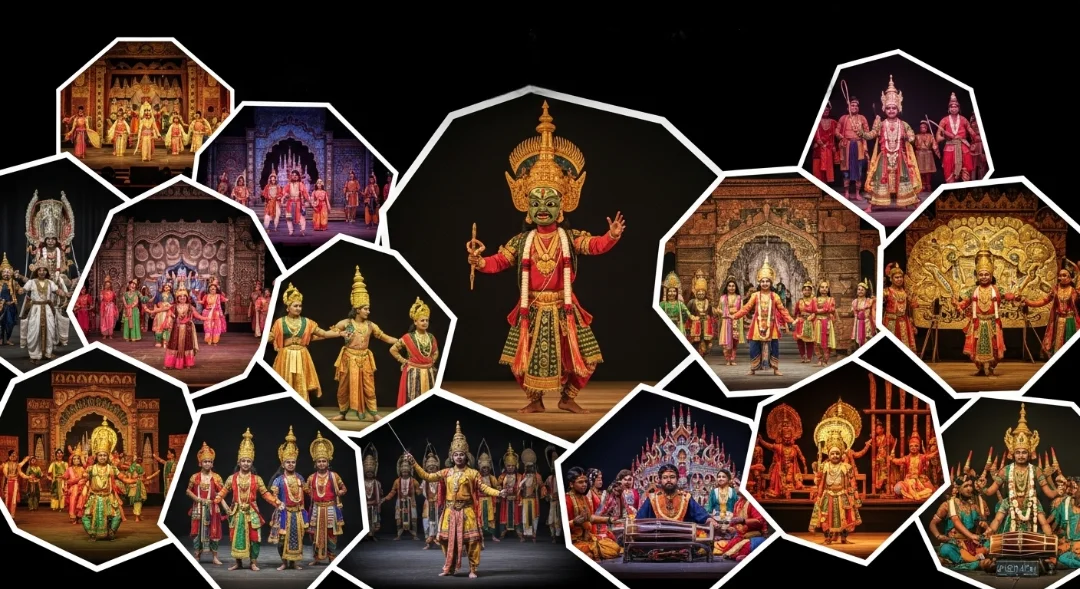
8. Indonesia
The Kakawin Ramayana is a central part of Indonesian literature and culture, particularly in Bali and Java. The epic is a source of inspiration for traditional dances, music, and art forms.
- Unique Aspect: The story is often performed through traditional Javanese and Balinese dances, which are known for their intricate hand gestures and expressive movements. The Wayang Kulit, or shadow puppet theatre, is another unique medium through which the epic is narrated.
9. Myanmar
Myanmar’s Yama Zatdaw, its version of the Ramayana, is a popular part of its cultural landscape. The epic has been adapted to reflect local customs and Buddhist principles.
- Unique Aspect: The story is typically performed using intricate marionette puppets and dramatic plays, offering a different but equally compelling form of storytelling.
10. Sri Lanka
Sri Lanka holds a unique place in the Ramayana’s narrative as the setting for some of its most dramatic events. The country has a number of sites linked to the epic, which have become pilgrimage destinations for many.
- Unique Aspect: The Ramleela celebrations here are tied to the physical landscape. Visitors can witness performances while also exploring the places where the story is said to have unfolded, such as the Sita Temple in Nuwara Eliya.
The Grand Finale: Dussehra and its Global Reach
The global celebration of Ramlila reaches its climax with the Dussehra festival, which symbolizes the victory of good over evil. Across these nations, communities gather to witness the dramatic finale—the burning of effigies of Ravana, his brother Kumbhakarna, and his son Meghnad. This act is not just a performance; it is a ritualistic cleansing and a reaffirmation of the timeless moral values of the epic. These international Ramlila festivals are a testament to the power of stories to unite people across cultures and generations.
Also Read: Vijayadashami 2025: 10 Unforgettable Places to Experience Dussehra Celebrations in India
Conclusion
The global reach of Ramlila celebrations abroad is a powerful reminder that some stories are too magnificent to be contained within a single border. From the vibrant stages of the United Kingdom to the serene temples of Thailand, the epic performance of Ramlila continues to thrive. It is a living tradition that connects the Indian diaspora to their roots while also sharing the timeless wisdom of the Ramayana with the world. These celebrations are not just a display of culture; they are a bridge between past and present, a beacon of hope, and an extraordinary example of how a single narrative can inspire and unite humanity.
Must Read: India’s Ramlila Hotspots: Top 10 Cities for an Unforgettable Epic Celebration
FAQs (Frequently Asked Questions)
Q1. What is the main purpose of Ramlila?
Ans: Ramlila, which literally means “Rama’s play,” is a dramatic folk re-enactment of the Hindu epic Ramayana. Its main purpose is to narrate the life story of Lord Rama and celebrate the victory of good over evil, culminating in the Dussehra festival.
Q2. Why is Ramlila celebrated in other countries?
Ans: Ramlila outside India is primarily celebrated due to the Indian diaspora who carried their cultural and religious traditions with them. It is a way for communities to preserve their heritage and pass it on to future generations.
Q3. Are all international Ramlila performances the same?
Ans: No, while the core story remains, many Ramlila celebrations abroad have unique Ramayana adaptations that incorporate local customs, languages, music, and art forms, creating a distinct cultural blend.
Q4. How long do these performances typically last?
Ans: Most Ramlila performances span 10 to 12 days, aligning with the Hindu festival of Navratri and concluding on Dussehra. However, some traditional performances, like those in Varanasi, can last up to a month.
Q5. Is Ramlila officially recognized internationally?
Ans: Yes, Ramlila was recognized in 2008 by UNESCO as a UNESCO Intangible Cultural Heritage of Humanity for its cultural significance and its role in bringing communities together.
Thank you for trusting Outdoorkeeda as your guide for your travel needs. 🙏

